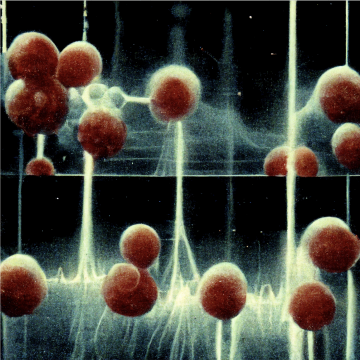Center of Excellence in Addiction Studies
Neuroanalytical Core

The Neuroanalytical Core utilizes established methods to measure concentrations of small molecule neurotransmitters, like dopamine and serotonin. The core utilizes electrochemical methods to measure fast (phasic) and slow (tonic) dopamine/serotonin signaling events.
Fast-Scan Controlled Adsorbtion Voltammetry (FSCAV) is used to measure basal concentrations of easily oxidized neurotransmitters in vivo using nafion coated carbon-fiber microelectrodes to prevent tissue toxicity. FSCAV is a powerful technique that provides a chemical signature of electroactive and basal molecules on a sub–second time scale. FSCAV resolves chemical changes after pharmacological or behavioral stimuli in order to correlate tonic and phasic dopamine/serotonin neurotransmission.
The Heien group studies the vast chemical, temporal, and spatial heterogeneity of the brain makes linking specific chemicals to brain function challenging. Specifically, dopamine has a variety of roles in the brain and is involved in learning, memory, motivation, emotional behaviors, addiction, pain signaling.
The Neuroanalytical Core provides chemical recordings of in vivo with high spatiotemporal resolution, sensitivity, and minimal tissue damage. We will expand the available techniques and couple with genetic techniques to provide a complete picture of in vivo changes in neurotransmitter levels. This approach has the potential to enhance the measurements and revolutionize the way we interpret data in vivo.
We have a full suite of electrochemical-based approaches for quantification of electroactive neurotransmitters in vivo. To understand how the brain functions and what disruptions underlie diseases and disorders, analytical methods to monitor chemical signaling in living brain tissue are critically important. Neurochemical analysis techniques should have the appropriate temporal, spatial, and chemical resolution to study these systems, while minimally perturbing them to allow unconstrained in vivo measurements. To make a direct measurement in functioning, live tissue these methods must be able to selectively measure chemical changes on multiple timescales ranging from milliseconds to months, have spatial resolution on the order of micrometers or less, and be sensitive to concentrations ranging from picomolar to micromolar.
We do the following:
- Develop and apply electrochemical deploy biosensors to measure neurochemicals in real time
- Provide services to develop, integrate, and deploy biosensors to measure neurochemicals
- Measuring rapid (phasic) and slower (tonic) dopamine and serotonin signaling at carbon-fiber microelectrodes in real-time with a robust and reliable technique for quantifying electroactive neurotransmitter concentrations in vivo with minimal tissue damage
- Develop microdialysis methods to measure the extracellular concentrations of neurochemicals in vivo.
- Link chemical changes with pharmacological or behavioral stimuli


M. Leandro Heien, PhD
Associate Professor, Chemistry and Biochemistry

